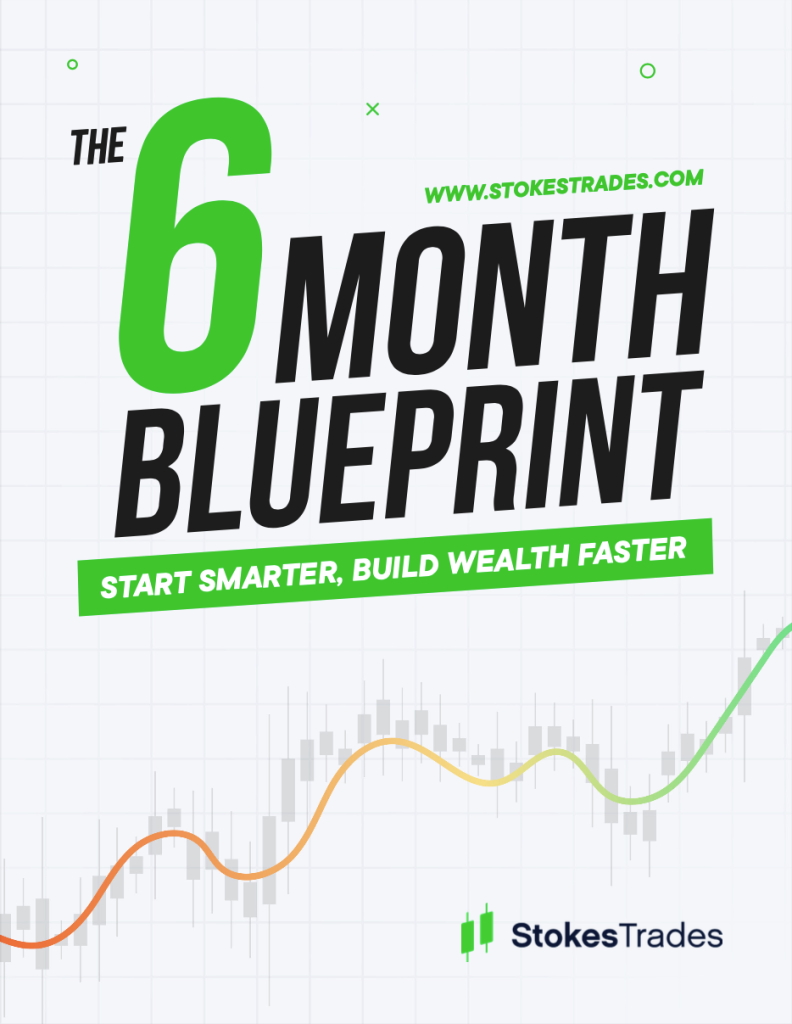You’ve likely honed your trading skills—charts, indicators, strategies—but still catch yourself hesitating, chasing trades, or exiting too soon. Most traders agree that technical know-how isn’t enough; your mind often holds you back.
This post breaks down Jared Tendler’s The Mental Game of Trading (2021) and its key quote—“The charts are a mirror that reflects your inner self ”.
We’ll cover Tendler’s approach, explore the quote’s meaning with examples, and share practical steps to strengthen your mental game.

Download the Blueprint on Skool
If you don’t have a copy yet, consider downloading my free 6 Month Blueprint. Find Blueprints and free courses in our Skool Community
About Jared Tendler & The Mental Game of Trading
Jared Tendler, a top mental performance coach has helped elite performers in poker, golf, and trading. Drawing from his own struggles as a competitive golfer, he developed systems to build mental resilience. Author of The Mental Game of Poker series, Tendler now applies his proven methods to trading in The Mental Game of Trading.
The book tackles trading mistakes—like chasing trades or overtrading—as psychological, not technical, issues. Tendler pinpoints emotions like greed, fear, and anger as root causes and offers a practical system: map emotional patterns, identify triggers, and use tools like journaling and visualization to correct them. Unlike vague advice, his no-nonsense approach treats emotions as data, helping traders turn flaws into strengths for consistent performance.
Unpacking the Quote: The Charts are a Mirror of Your Inner Self
The quote— “The charts are a mirror that reflects your inner self”— captures Tendler’s philosophy.
Trading charts, with their lines of price action, volume, and indicators, show raw, factual information—numbers and patterns that reflect what’s happening in the market, like how much a stock or asset’s price has moved, how many shares were traded, or signals from tools like moving averages. This is objective data, meaning it’s measurable, verifiable, and the same for everyone looking at it, free from personal opinions or feelings. Yet, how you interpret these charts—whether you see opportunity, fear a loss, or feel pressured to act—reveals your internal world, like your emotions, biases, or mental blocks, as Jared Tendler highlights in his book.
Think of objective data as the hard facts on the chart: the price is $50, the trend is bullish. But your reaction—panic, excitement, or hesitation—shows what’s going on inside you, which can shape your trading decisions more than the data itself.
The market doesn’t care about your emotions, but your emotions color the market. A fearful trader might see a minor pullback as a crash signal, selling prematurely. A greedy one might ignore warning signs in a rising trend, holding too long. The chart remains the same; it’s your “inner self”—biases, past traumas, or unchecked impulses—that distorts the reflection.
Trading charts show hard facts—prices, volume, trends—but your repeated mistakes, like overtrading, aren’t the charts’ fault. They reflect your inner chaos, like a lack of discipline. By seeing this, you can use charts not just to analyze markets but to reflect on yourself, turning losses into lessons.
Real-World Examples and Applications
Consider a day trader during a volatile market session. The chart shows a breakout pattern, but past losses trigger fear, leading to hesitation. The opportunity passes, and frustration builds—classic “tilt.” Tendler’s system would have the trader journal this: What emotion arose? What’s the root (e.g., unresolved fear from a big drawdown)? Correct it with pre-trade routines to build confidence.
Another example: An institutional trader spots a head-and-shoulders pattern signaling reversal. But overconfidence (from recent wins) leads to oversized positions, amplifying losses when it confirms. Here, the chart reflects overconfidence. Applying the quote, the trader reflects: “My inner self is seeking validation through wins, not strategy.”
To apply this:
- Write Down Feelings: After a trade, jot down how the chart made you feel (e.g., stressed, excited) and compare it to what the chart actually showed (e.g., price, volume).
- Spot Emotional Triggers: Notice which chart patterns (e.g., a sudden drop) spark strong emotions like fear or greed.
- Stay Calm with Visualization: Picture charts as neutral tools, like a mirror, not something to fear or fight.
- Find Emotional Balance: Don’t let overconfidence or doubt take over—work on keeping your mindset steady.
These steps help turn your emotions into useful insights for better trading.
Conclusion: Master Your Mind, Master the Markets
The Mental Game of Trading is a game-changer for anyone tired of emotional sabotage. The quote about charts as mirrors reminds us that trading success starts inward. By confronting your reflections—greed, fear, or doubt—you unlock consistent performance. Whether you’re a novice or you have some experience trading, Tendler’s tools offer a path to psychological edge.
Join our Skool community to stay accountable, share your trades and emotions, and access our course on mental mistakes. There’s a low-stress trading strategy to reduce errors and a clear path for beginners to build confidence and achieve success. Visit Skool.com/trading to join for free.


